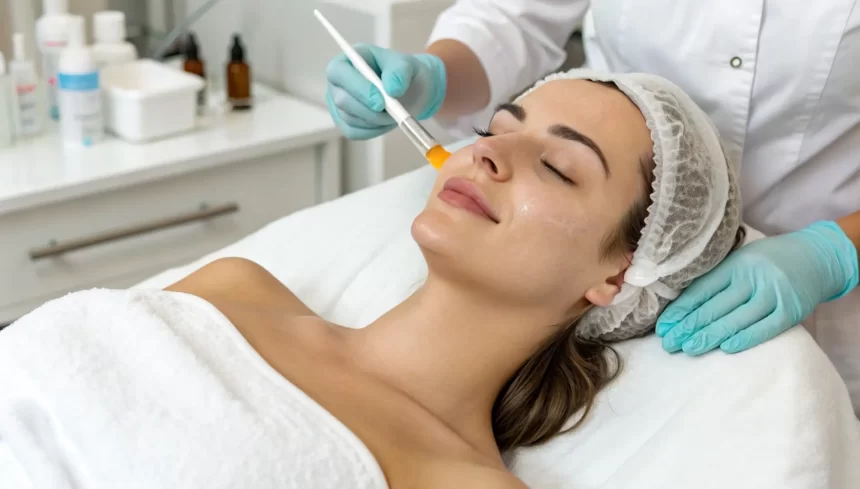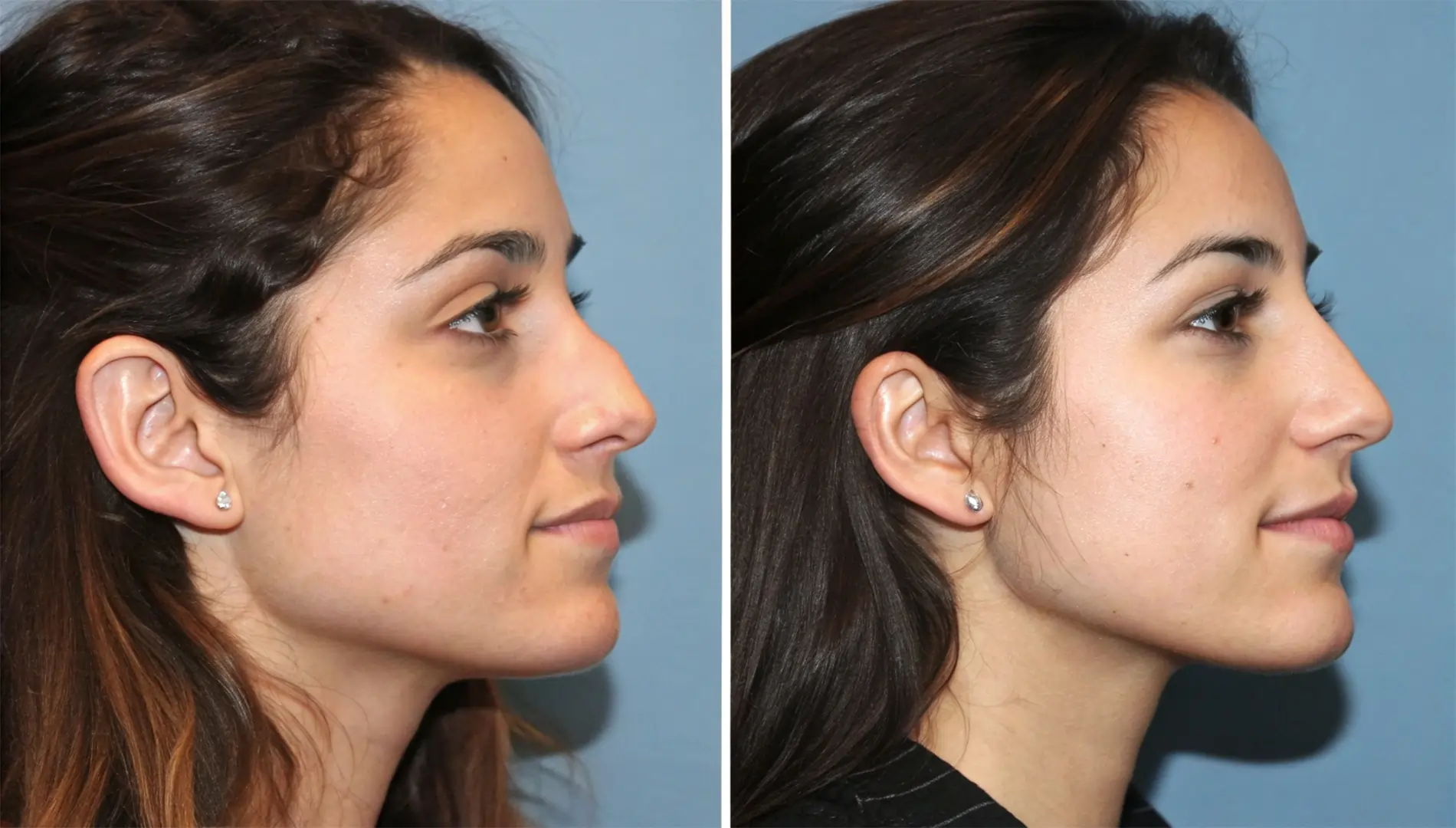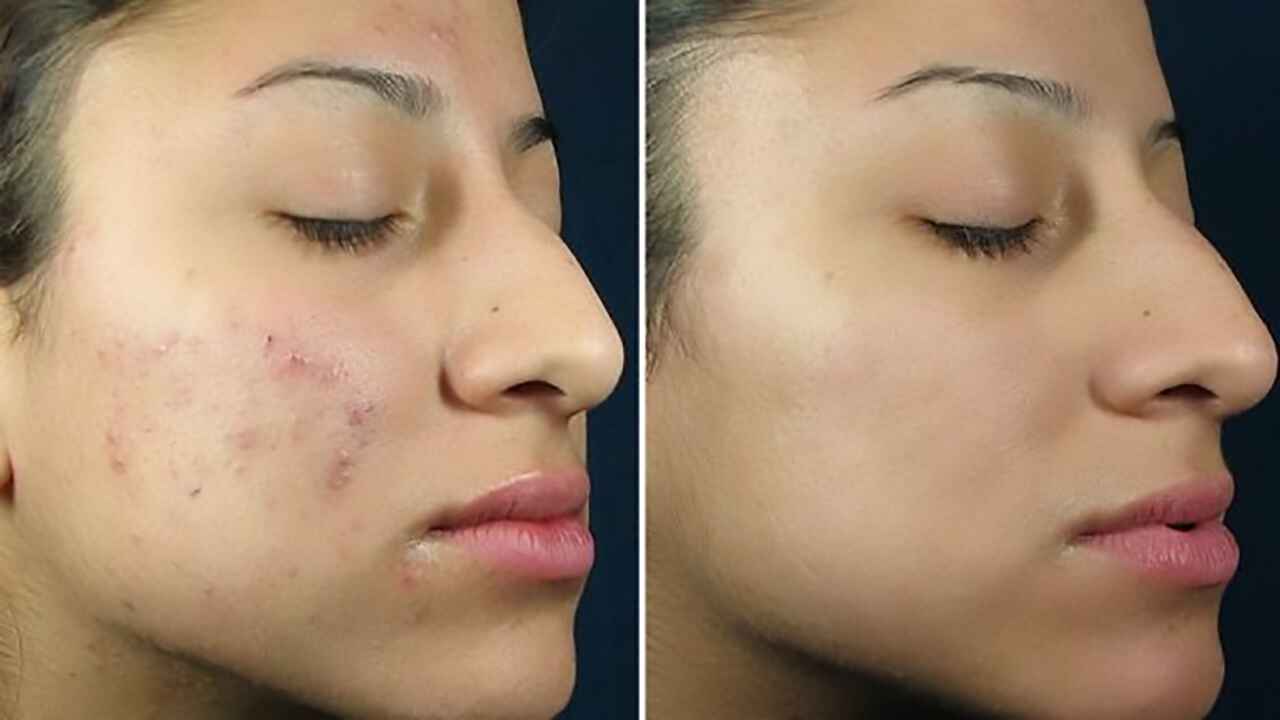People who care about their skin and appearance can use specialized solutions to rejuvenate their skin. A chemical peel involves applying a solution that enhances the skin’s texture and tone while removing the damaged outer layer. Stay with us.
- What exactly is a chemical peel?
- How does a chemical peel work?
- Types of Chemical Peels
- Who should consider a chemical peel?
- General guidelines before having a chemical peel include:
- Before your peel, you may need to:
- What to expect during a chemical peel?
- For best results, follow these guidelines:
- Are There Any Risks?
- What is the difference between an at-home chemical peel and a professional chemical peel?
- How much does a chemical peel cost?
- Does insurance cover chemical peels?
- The Bottom Line
What exactly is a chemical peel?
A chemical peel is a skin care treatment where a specialist applies a chemical solution to your skin to remove damaged top layers. This process reveals smoother, brighter skin. It might sound a little scary, but don’t worry. As your skin peels off, it reveals younger-looking, rejuvenated skin.
Skin problems that a chemical peel may cause include:
- Sun damage
- Uneven skin tone or texture
- Fine lines and wrinkles
- Acne scars
- Age spots or freckles
It’s a very versatile treatment that has been around for decades and is still used by dermatologists and estheticians. Depending on your health insurance plan, some aspects of this treatment might even be partially covered, particularly if it addresses certain medical skin conditions.
How does a chemical peel work?
Doctors or skin specialists perform chemical peels on an outpatient basis in a doctor’s office or surgical center. They cleanse your skin with a solution to remove excess oil and protect your eyes and hair. Then, they apply a chemical solution, such as glycolic acid, trichloroacetic acid, salicylic acid, lactic acid, or carbolic acid (phenol), to your skin. These acids break down the bonds between dead skin cells on the surface, allowing them to naturally slough off.
After the treatment, your skin will begin to peel. This process helps improve the appearance of your skin.
Types of Chemical Peels
Not all chemical peels are created equal. There are three main types, and each targets different skin concerns:
Superficial peels
These are the gentlest type of peel. They use mild acids like alpha hydroxy acids (AHAs) and are great for people with sensitive skin or those new to chemical peels. They’re great for improving minor skin concerns like dullness or uneven texture, and there’s little downtime.
Medium peels
These go a little deeper at this level, using stronger acids like trichloroacetic acid (TCA). They’re ideal for addressing more significant issues like age spots, acne scars, or fine lines. You may experience a few days of redness and peeling, but the results are worth it.
Deep peels
These are the heavy hitters. Deep peels use strong acids like phenols and can address major skin concerns like deep wrinkles or severe sun damage. However, they require a longer recovery time (sometimes weeks) and are usually performed in a dermatologist’s office.
Who should consider a chemical peel?
A chemical peel isn’t for everyone, but if you’re looking for these results, you’ll get these results:
- Rejuvenates your skin and reduces dullness.
- Minimizes the appearance of fine lines or wrinkles.
- Fades away dark spots, sun damage, or acne scars.
- Improves your skin’s texture and tone.
However, if you:
- Have very sensitive or reactive skin.
- Are prone to keloid scars.
- Are pregnant or breastfeeding.
- Have certain skin conditions like eczema or rosacea.
- It’s always a good idea to consult a dermatologist or licensed esthetician before taking the plunge.
- A chemical peel is not effective for treating sagging, bumps, deep scars, severe wrinkles, or prominent facial lines.
For these concerns, cosmetic surgical procedures such as carbon dioxide laser, facelift, brow lift, eyelid surgery, or soft tissue fillers may be more appropriate. A dermatologic surgeon can guide you in choosing the best treatment for your needs.
General guidelines before having a chemical peel include:
Undergo a physical exam where your doctor will assess your skin and the treatment area to determine the most suitable type of peel for you.
Discuss your expectations, including your goals, motivations, and any potential risks. Ensure you have a clear understanding of the number of treatments needed, the healing time, and the expected results.
Before your peel, you may need to:
- Limit sun exposure: Avoid unprotected sun exposure, as excessive sunlight before the procedure can lead to permanent uneven pigmentation in the treated areas.
- Avoid certain treatments and hair removal methods: Refrain from hair removal techniques like electrolysis or waxing for about a week before the peel. Additionally, skip hair coloring, permanent wave or straightening treatments, facial masks, or scrubs during this time. Avoid shaving the treated areas for at least 24 hours before the procedure.
- Plan for transportation: Arrange for someone to drive you home after your peel.
What to expect during a chemical peel?
The entire process is relatively simple, and most treatments are completed in less than an hour. However, expectations vary depending on the depth of your chemical peel.
- Preparing your skin
Your skin will be cleansed to remove any oil or impurities. Some providers may use a preparation solution to ensure the peel penetrates evenly. - Applying the peel
The chemical solution will be carefully applied to your skin. You may feel a slight tingling or burning sensation, but this is usually tolerable. For deeper peels, a numbing agent may be used. - Waiting for it
The peel will be left on your skin for a set amount of time (usually just a few minutes) before being neutralized or washed off. - Aftercare
After your treatment, your skin may feel tight or sensitive. Your provider will likely use soothing products and give you aftercare instructions to follow at home.
For best results, follow these guidelines:
Avoid tanning: Do not use tanning beds and do not expose your skin to indoor or outdoor tanning while it is healing.
Use sunscreen daily: Always protect your skin with sunscreen after it has healed to maintain results.
Keep your skin moisturized: Use a daily moisturizer as directed to prevent dryness and reduce the risk of scarring.
Protect your new skin: Your skin will be more delicate and vulnerable to complications. Follow your doctor’s instructions after treatment to minimize the risk of abnormal discoloration or other issues.
Call your doctor if needed: Call your doctor right away if you experience itching, swelling, or burning. Avoid scratching, as this can lead to infection.
Are There Any Risks?
Like any cosmetic treatment, chemical peels come with some risks. Common side effects include redness, peeling, and sensitivity, but these are usually temporary. More severe risks, like scarring or infection, are rare but can happen, especially with deep peels.
That’s why it’s so important to go to a reputable provider who knows what they’re doing.
What is the difference between an at-home chemical peel and a professional chemical peel?
There are many at-home chemical peel products on the market, but they are not as strong as professional treatments. While these products can be a great way to maintain your skin between professional treatments, it is very important to follow the instructions carefully. Start with a lower concentration and always test on a small area of skin first to avoid irritation or burning.
Skin therapists, estheticians, or doctors perform professional chemical peels using highly concentrated solutions. These procedures typically take place on an outpatient basis, but the intensity of the peel can cause the skin to peel, flake, or break. To minimize downtime and achieve optimal results, professionals often schedule a series of peels over a six- to 12-week period and recommend maintenance treatments twice a year.
How much does a chemical peel cost?
Prices can vary depending on the type of peel and where it’s done. Here’s a rough breakdown:
- Superficial peels cost between $100 and $300 per session.
- Medium peels cost between $300 and $1,000 per session.
- Deep peels cost between $1,000 and $3,000 per session.
Keep in mind that most people need multiple sessions to see the best results.
Does insurance cover chemical peels?
Usually not. Chemical peels are a cosmetic procedure. Cosmetic procedures are not covered by health insurance and must be paid for in full by the individual.
The Bottom Line
Chemical peels might sound intimidating, but they’re a safe and effective way to level up your skincare routine. Whether you’re dealing with acne scars, sun damage, or just want a glow-up, there’s a peel out there for you. Just remember to do your homework, choose the right type of peel for your skin, and follow your provider’s advice for the best results.
Skincare isn’t one-size-fits-all, and chemical peels are no exception. But with a little knowledge and the right approach, you’ll be well on your way to smoother, brighter, and healthier skin.














